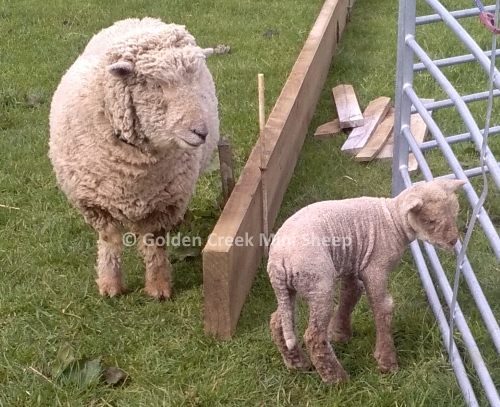Olde English Southdown (Babydoll Sheep) Breed History
Earliest Beginnings
The Southdown is one of England’s oldest breeds. Regarded as the original heartland sheep of south-east England this breed can be traced back to the South Down hills of Sussex county, England. To improve this stock, a breeding program was put in place in the late eighteenth century (around 1780) by John Ellman of Glynde in Sussex and later by Jonas Webb of Babraham, near Cambridge.
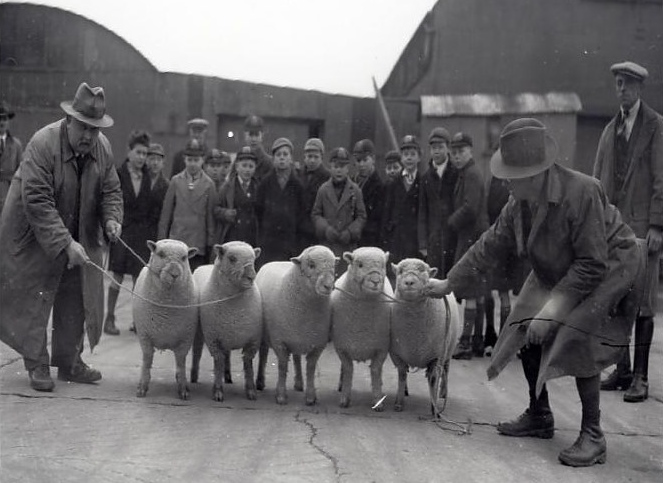
Origins and Decline in the United States
It is believed that the breed reached the United States in 1803. Their popularity grew and later declined in nearly the same pattern that had occurred in England. The small Southdown could not serve the consumer demand for larger meat cuts. This was a significant factor in the development and mass production of the larger, leggier Southdown of today. This divergence from the original breed standards was the beginning of what would later become two distinct lines: The Southdown and the miniature (or original) Southdown. In breeding for these larger characteristics however, many of the original “miniature” attributes were bred out and nearly lost. Each year brought a further decline in the number of these “original” Southdowns.
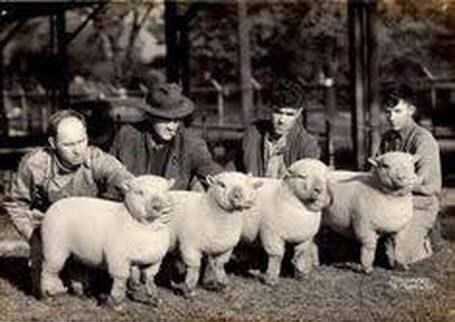
Decline in England
In England, these small Southdowns grew in popularity up until 1908 when there were approximately 367 registered flocks totaling about 110,000 ewes. The growth in this breeds’ development slowed in the early 1900’s as World War I brought a sharp decline in their numbers. By the end of the World War II, the demand for larger cuts of meat had almost forced the breed into extinction.
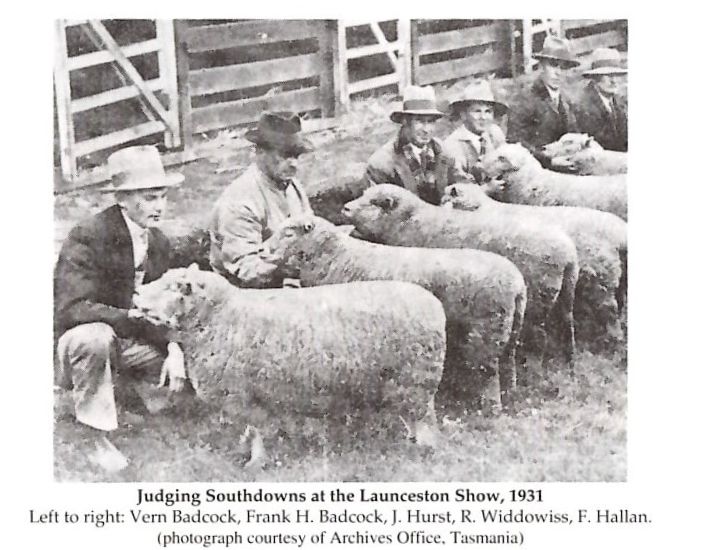
American Rediscovery
In 1986, Robert Mock began a search for miniature sheep that conformed to the original Southdowns of the 1700’s. However, finding them proved to be difficult. At one point they were believed to be extinct. After a four-year search, two small flocks totaling 26 sheep were located; however, this group would not be able to provide a sustainable gene pool. After an extensive search, a total of 350 of these miniature sheep were located. Many of them still carried their original Southdown registration papers.
Babydoll Sheep Registration
To distinguish these small sheep from the larger modern-era Southdown, Mr. Mock named them Olde English “Babydoll” Southdowns. To keep this line pure, a registration was formed. Only adults two years and older were accepted so that they could be judged against the original conformation standards as verified by a veterinarian. Each sheep’s registration application was passed before a board of three members of the Breed Association. After this initial review and acceptance period, the “Foundation Flock” registry was closed in 1991. The term Foundation Flock is still used to refer to this original pool of sheep. Subsequently, the process of registering lambs from this original foundation flock began.
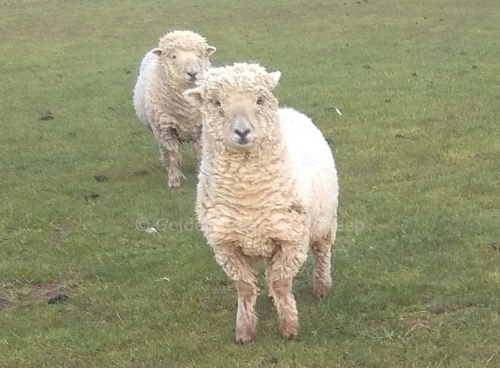
General Appearance
While all “Babydolls” are Southdowns, not all Southdowns are “Babydolls”. The modern-day Southdown is a much larger sheep, while the Babydolls are 24 inches or less at the shoulder when shorn as adults, with many of them in the 18 to 22 inch range. Adults weigh 70 to 150 pounds. Both sexes are polled (without horns); however, horn buds do appear, especially in black rams. These should never be more than 1/2 to 1 inch long. They are not a registration-disqualifying attribute. The sheep should have a fairly flat face with a mouth that appears to be smiling. They have round heads and very short little ears. They become very wooly and take on the appearance of teddy bears when in full coat. Occasionally the sheep need to have the wool trimmed from around their eyes so that they do not become “wool blind”.
General Breed Description
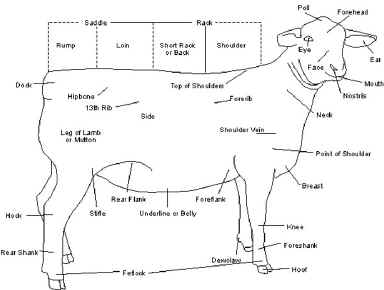
| Head | Wide and level between the ears with no sign of slug or dark poll in the whites |
| Face | Full, not too long from eyes to nose and of one even color |
| Eyes | Large, bright and prominent |
| Ears | Medium size and covered with short wool |
| Neck | Wide at the base and will set to the shoulder |
| Size | Must be 24 inches or under when shorn, measured straight up the front leg to the top of the shoulder. Lambing without difficulty is one of the qualities of a Babydoll; therefore, ewes under 18 inches are discouraged. |
| Shoulders | Well set, at top level with the back |
| Chest | Wide and deep |
| Carriage | Corky legs, short, straight, set on the outside of the body |
| Ribs | Well sprung and well ribbed up, thick through the heart with fore and hind flanks fully developed |
| Rump | Wide and long |
| Tail | Large and set almost level with the chin |
| Legs | Full, well let down with a deep wide twist (including thighs) |
| Wool | Of fine texture, great density and of sufficient length, staple, covering the whole of the body down to the hocks and knees, and right up to the cheeks, with a foretop, but not around the eyes or across the bridge of the nose. |
| Back | Level with a wide flat loin |
Wool
Babydolls come in both white, the predominant color, and black (a recessive gene which is considered rare). There is also a light brown and spotted, as shown in their history, but none of these were registered in the Foundation Flock. Today blacks are still considered rare but there is a fair number registered. Also, there is a movement to expand / reintroduce the presence of the spotted. Early on in their development, colors were discouraged in favor of a uniform color in the shearing process. These genes have, however, cropped up from time to time and are valued by some as a delightful variation to be further developed. It is not a disqualifying trait in the registration, which now accepts dilute black, grays and chocolate.
The breed standard calls for the animal to be covered with wool over the whole body, down the hocks and knees and over most of the face; however, hock, face and belly wool is lost in the shearing, skirting and carding process. Babydoll is considered a fine, dense wool. It has a 19 to 22 micron count (average fiber diameter), with a medium crimp. It grades about 55 to 60. The grease fleece can range from 4 to 7 pounds. The 12-month staple is two to three inches long. It has more barbs per inch than any other wool type. This makes it very attractive for blending with alternative fibers such as angora, mohair or alpaca. Also, this barb count makes it is well suited to hand spinning.

Temperament
The Babydoll is a mostly a docile breed. They are polled (do not have horns) in both sexes. An occasional foot stomp is the extent of their display, although there are always exceptions. They are a calm breed, making them easy to handle – particularly for less experienced shepherds and children. Babydolls can be easily trained to hand feed or flock to a desired area on command. Some have even been leashed trained. They have a strong herding instinct and do not wander. They do not challenge fence lines and are easy to keep contained. Generally docile Babydolls provide a calming and flocking effect on other breeds of sheep
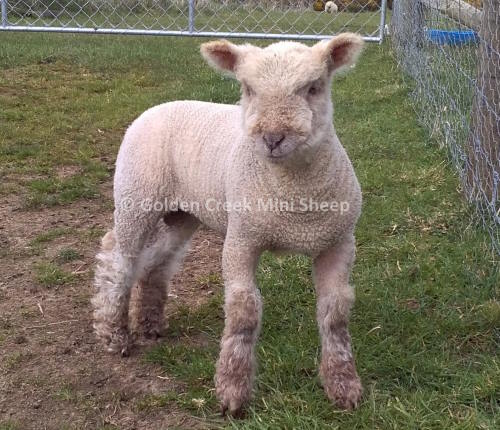
Uses
Babydolls require less acreage per animal than the full sized breeds and therefore do well on smaller pastures and in suburban settings. Because of their comparatively shorter legs, they are not ideal station sheep.
- Pets: Because of their size and temperament, Babydolls are the perfect size for petting zoos, 4H’s projects, the school fair etc.
- Organic Weeders: Being grass grazers, they do not tend girdle (eat the bark off of) trees or shrubs as many other breeds do. This makes them ideally suited to suburban settings. Babydolls also do well in vineyards, orchards and berry farms – where they leave the area well groomed and fertilise the soil as they graze.
- Wool: Handspinners find this an ideal source of wool – either as a stand- alone mini-flock or as an addition to an existing flock. They associate well with goats and can be used by the handspinner who also keeps angora goats.
- Companions: Babydolls also make excellent companions for other animals because of their calm temperament. When introduced to other breeds of sheep, they can provide a greater flocking instinct and a general calming effect. This can be valuable when dealing with sheep that have been handled less frequently or tend to be a “skittish breed”.
Click here for the list of Miniature Sheep Breeders in New Zealand
